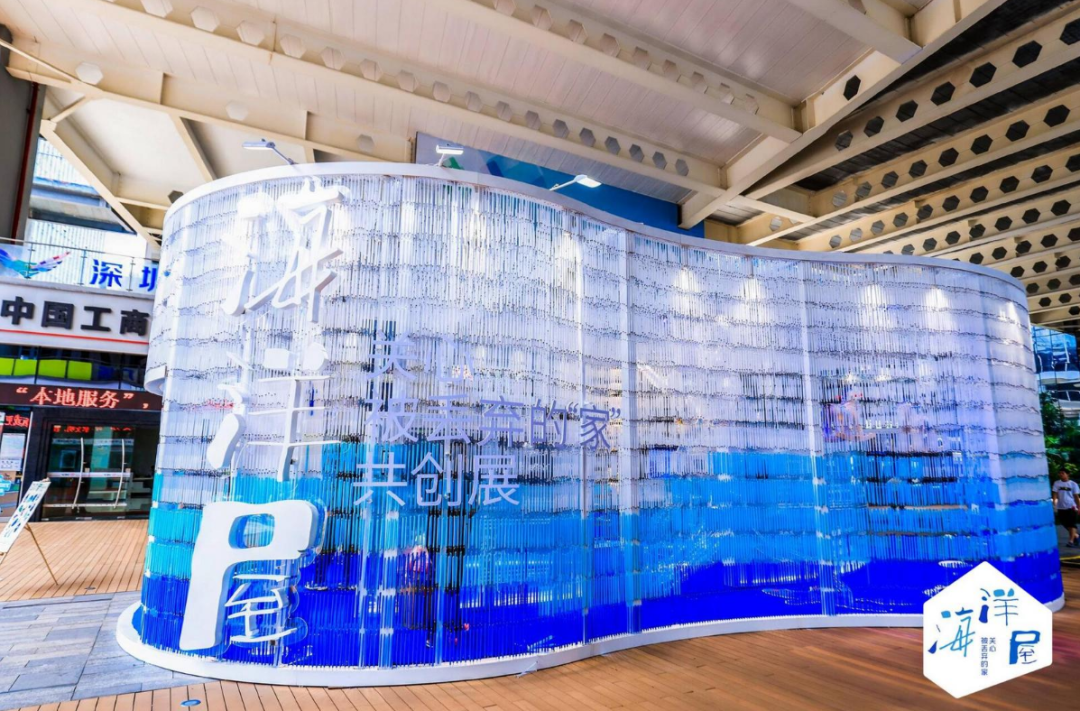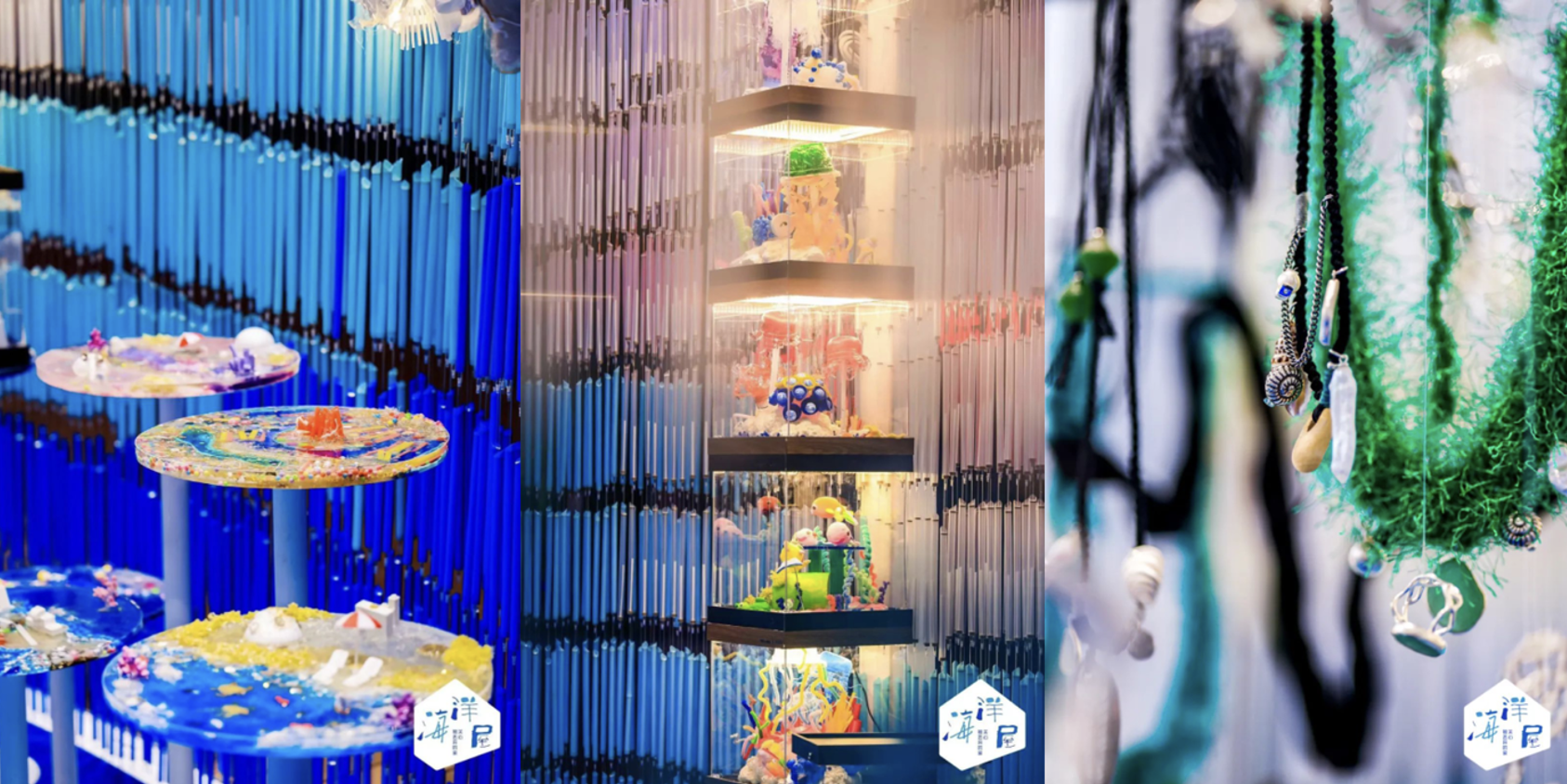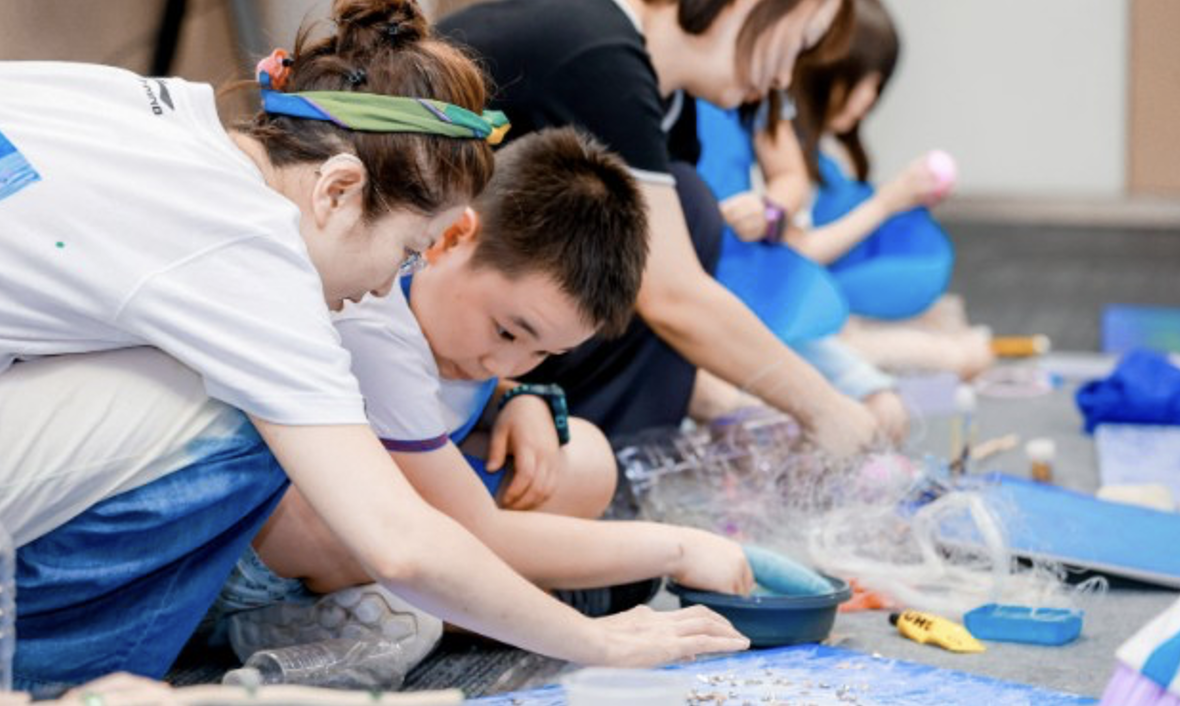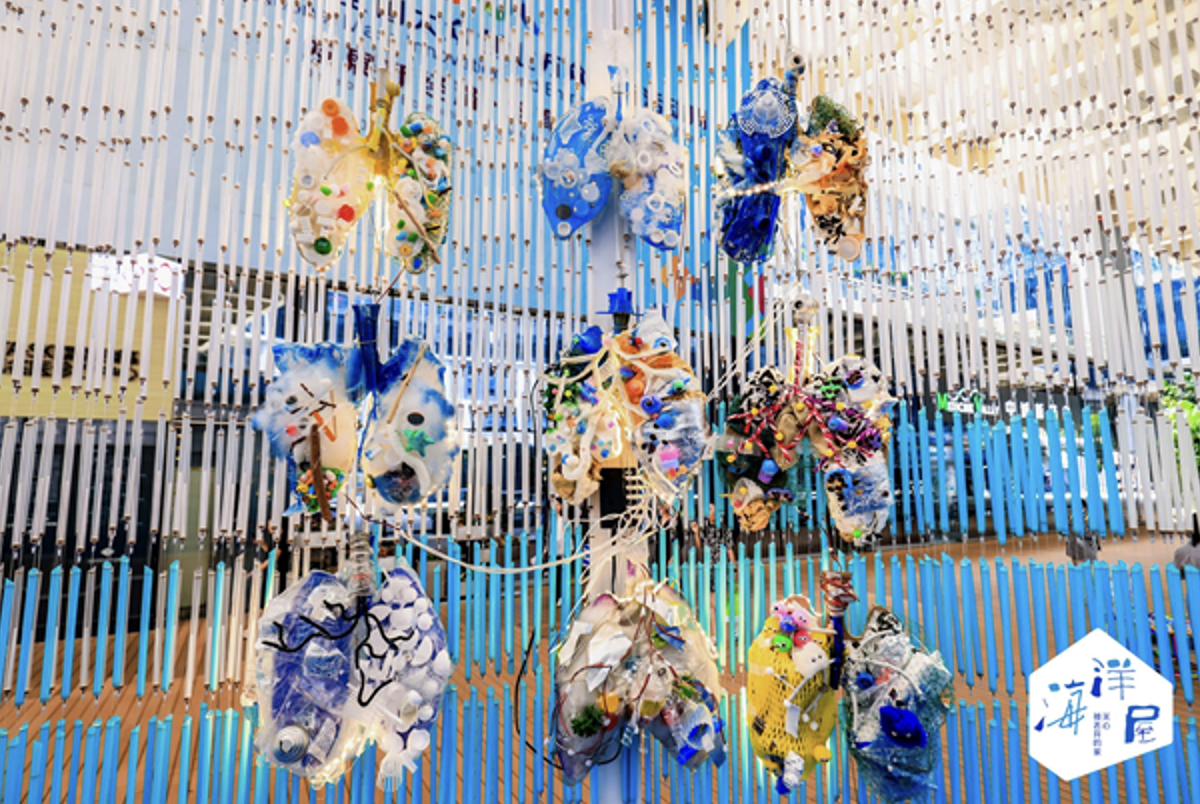Preserving Our Oceans: Marine Debris to Promote Ocean Conservation
Our oceans are under threat like never before. Plastic pollution, overfishing, and habitat destruction, to name but just a few, are pressing issues endangering marine ecosystems.
Recently, the Ocean House Exhibition was held in Shenzhen, China, in collaboration with NGOs and artists. It promoted ocean conservation and ecological sustainability by showcasing works of art by roughly a dozen artists and 300 co-creators, all using trash recovered from the ocean, exploring more possibilities for artistic co-creativity and marine ecological sustainability.
 The Ocean House, home of the exhibit, evokes a wave in motion.
The Ocean House, home of the exhibit, evokes a wave in motion.
From Trash to Treasures
The Ocean House, home of the exhibit, symbolized the power of regeneration in its very design, inspired by a water droplet and evoking ocean waves and coastlines. The exterior walls were adorned with specially designed straw pens made from recycled plastic straws, a reminder of the grave problem of plastic polluting our oceans. The Great Pacific Garbage Patch, the largest site of ocean plastic anywhere in the world, may be as large as 620,000 square miles, or three times the size of France.
Visitors to the Ocean House engaged with the artwork via sensory experiences, which had visual elements but also invited touch, smell, and listening to sounds. Intricate and simple, whimsical and practical, the pieces in the exhibit captivated visitors and demonstrated the transformative power of recycling and creativity.
 Participating artists used reclaimed ocean trash to create compelling visual work.
Participating artists used reclaimed ocean trash to create compelling visual work.
The event was a collaborative effort between Tencent SSV, multiple nonprofit organizations, close to a dozen artists, and 300 co-creators, all united in raising awareness about the importance of ocean conservation and sustainability. Visitors included local residents, artists, and environmental enthusiasts, all coming together to appreciate the beauty of repurposed ocean waste and understand the urgent need to protect marine life.
Creativity, collaboration, conservation
In the 60 days leading up to the exhibition, Tencent SSV collaborated with artists and co-creators, organizing more than 50 workshops to create unique art pieces displayed in the Ocean House. This collaborative effort brought together a diverse bunch, each contributing their own perspectives to raise awareness about protecting marine ecosystems and giving useful new life to plastic waste.
 Children make art in a workshop at Tencent Binhai headquarters with their parents.
Children make art in a workshop at Tencent Binhai headquarters with their parents.
One of the key co-creators in the exhibition was a group of over 100 children from the Shenzhen Bomi Art Center. These young creators, some as young as three years old, contributed dozens of pieces to the exhibition. Before getting to work, the children spent two months learning about recycling and sustainability, sorting their household waste into categories such as paper, rubber, metal, and glass.
One notable artwork created by the children is “Tidal Breathing.” Using recycled waste and composite materials, the young artists crafted a series of lungs, symbolizing the spontaneous act of breathing, much like the natural ebb and flow of ocean tides.
 “Tidal Breathing” was created by children from the Shenzhen Bomi Art Centre.
“Tidal Breathing” was created by children from the Shenzhen Bomi Art Centre.
In preparation, the children gained an understanding of how human activities affect our oceans. This educational component played a crucial role in fostering a sense of responsibility and commitment to environmental protection among the event’s participants.
An Ocean of Digital Tools for Good
During the Ocean House Exhibition, Tencent SSV, together with internationally renowned AI and NFT artist Song Ting, created a "Painting Dreams" Weixin mini program powered by an AI art generator.
The mini program allows users to type in their wishes and receive a personalized painting created by AI that learns the drawing style of autistic children. The project team aims to reach a wider audience and inspire more people to act to protect our oceans.
Furthermore, Tencent SSV will collaborate with an art museum to issue a limited number of digital artworks with the application of blockchain technology, making them available for free to those passionate about the environment. Some of the work will also be sold for charity, with the proceeds benefiting ocean-protection initiatives.


